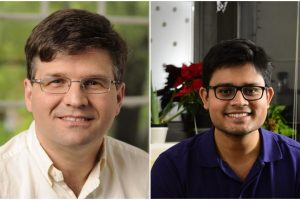
Pablo Iglesias, the ECE Edward J. Schaefer professor, recently had a paper published in Science Advances. The paper, which is titled “Traveling and standing waves mediate pattern formation in cellular protrusions,” was co-written with Sayak Bhattacharya PhD ’20, as well as with individuals from the Johns Hopkins Departments of Chemical and Biomolecular Engineering, Cell Biology and Center for Cell Dynamics, and Biological Chemistry.
Here is a brief synopsis of the paper that was constructed by Iglesias and Bhattacharya:
“Many cells, such as white blood cells of the immune system, or soil amoebae, move by extending protrusions in a rhythmic pattern. One the last ten years, our labs and others have shown that these protrusions are generated by waves of activity that come from an excitable system – a dynamical system similar to ones that govern communication between neurons. In this paper we showed, theoretically, that these waves could be made to stop, resulting in a thin, stable, pattern of high activity. In cells, this region of high activity could give rise to long, thin extensions known as filopodia. Experimentally, we showed that this transition from wave to stable pattern exists in both Dictyostelium amoebae as well as some mammalian mutant strains. Overall, we proposed an all-encompassing protrusion template governing cell migration, using a novel method of pattern formation.”
Follow this link to read the paper.